Image editing is an art form that allows you to bring your creative visions to life. GIMP, a popular open-source software, offers you various options for customizing your images. In this guide, I will show you how to achieve the effect of a high-pass filter without any additional plug-ins in GIMP. This is particularly useful if you do not want to install an external script but still want to achieve professional results.
Key Insights
- The high-pass filter can be applied without the installation of plug-ins or scripts.
- Several steps are necessary to achieve the desired result.
- The comparison between the manual and script versions shows that both methods can produce the same result.
Step-by-Step Guide
In the first step, you create a duplicate of your original image. For this, you can click on the corresponding icon in the layers palette. Make sure to name the copy appropriately. Here, we use the name "High-Pass Filter".
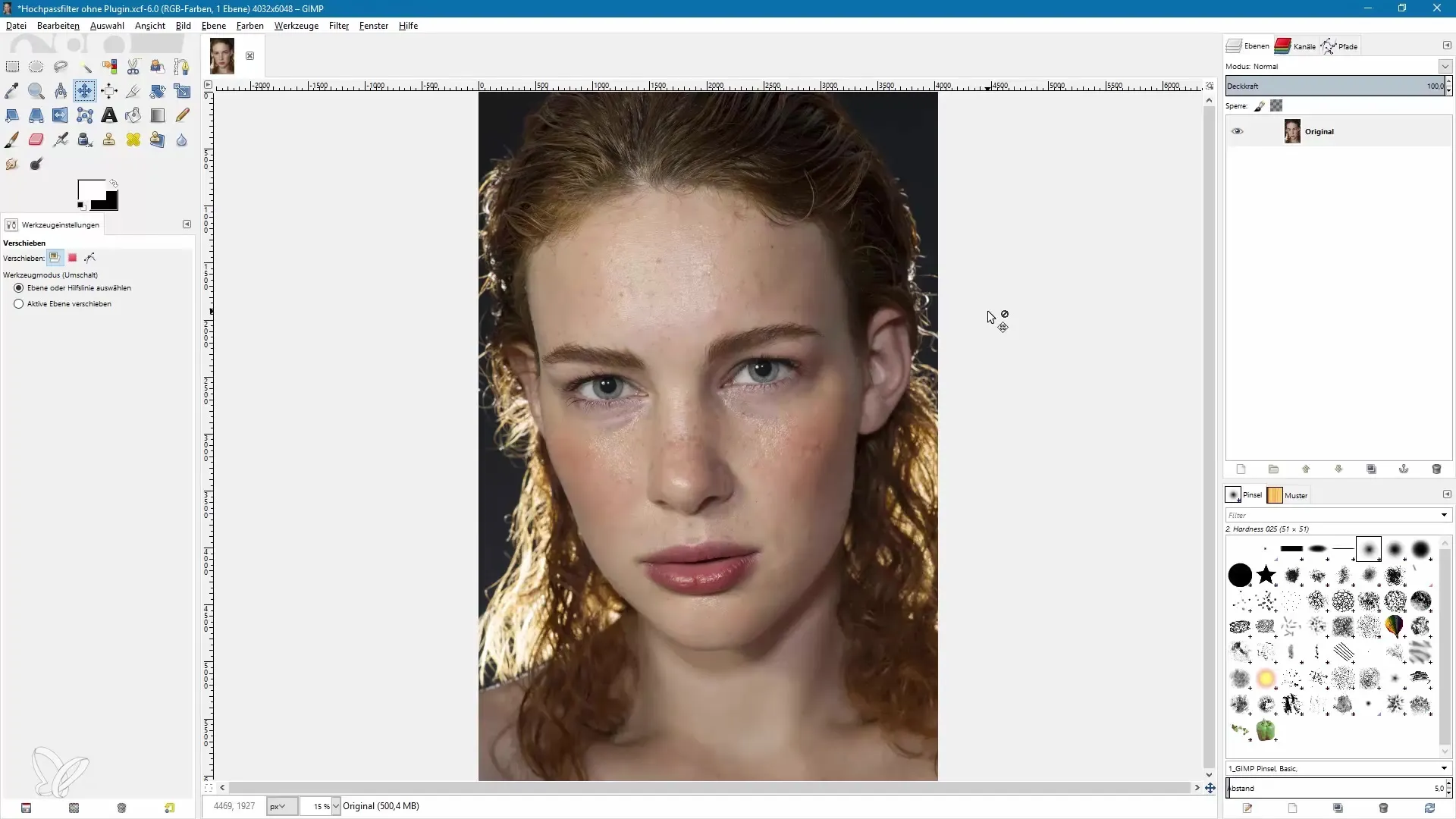
Now that you have created the duplicate, select the high-pass filter script. If it is not installed, you will not find this menu item. In my case, I can click on "Filters" in the top menu bar, followed by "Generic" and then "High-Pass Filter".
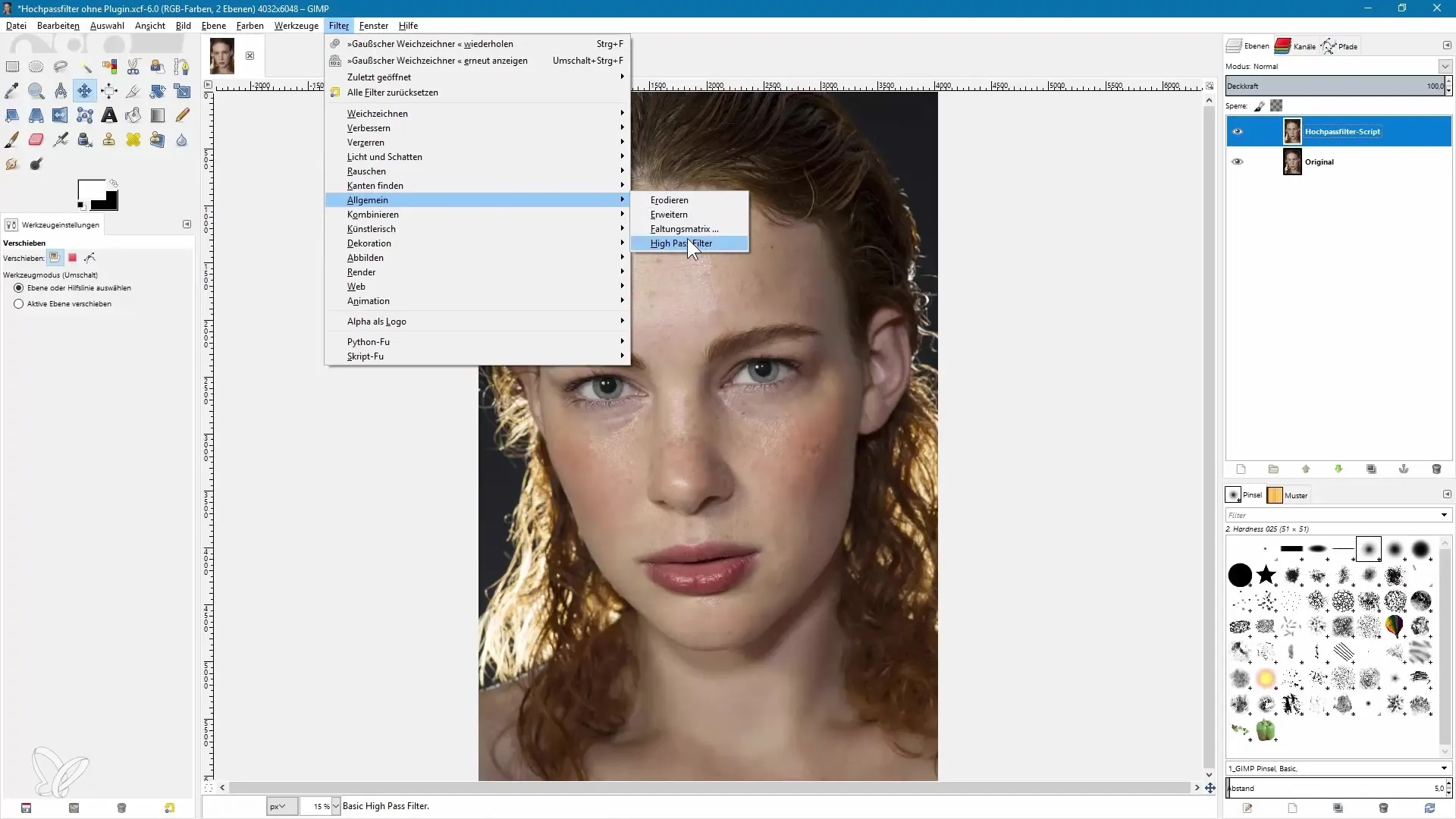
In the following dialog, you can set the radius of the high-pass filter. I chose a value of 35 and confirm with "OK". Wait a moment while GIMP processes the image. You will see the result on your duplicate image.
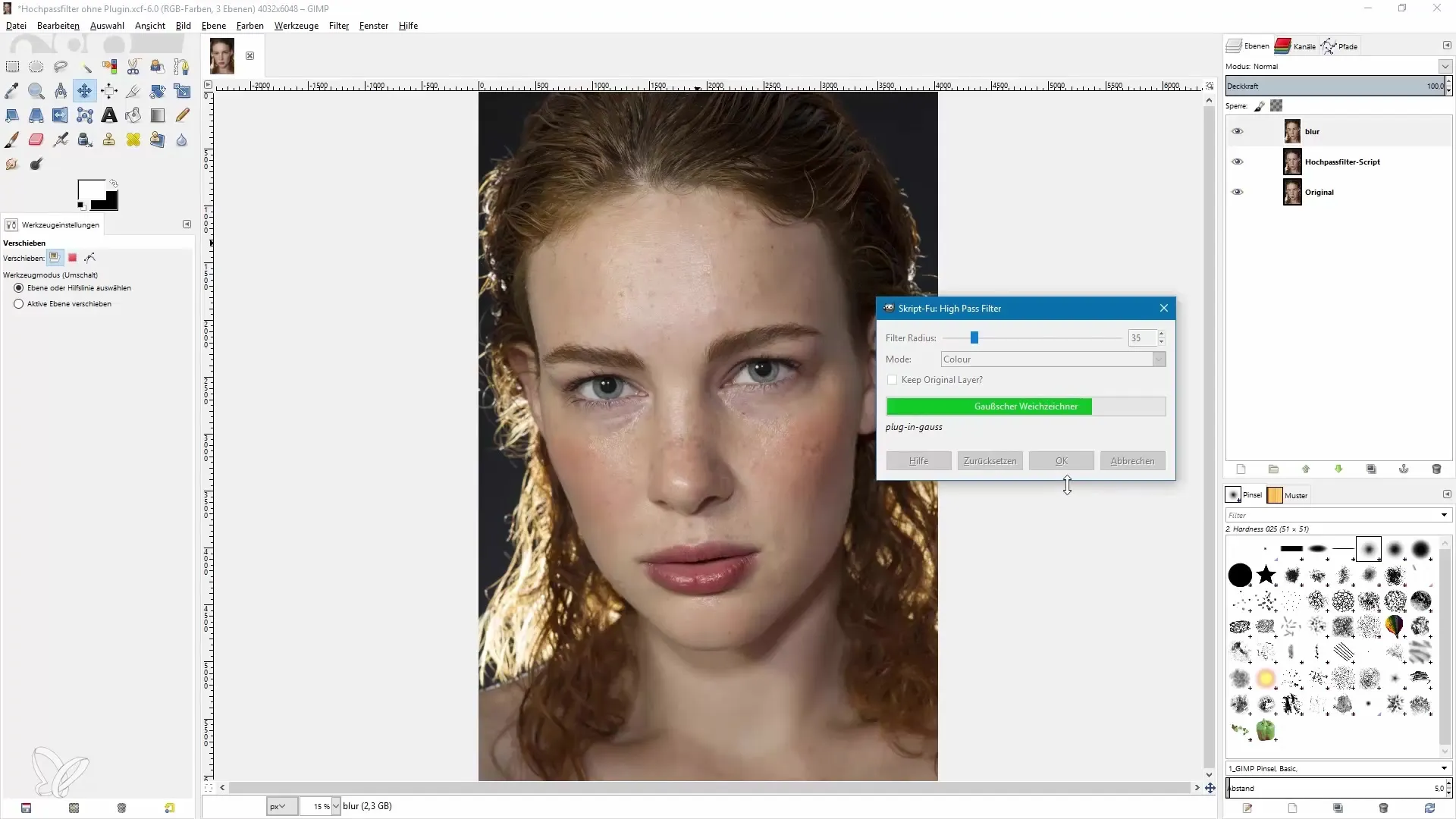
To proceed to the next step, hide the high-pass filtered layer and create another duplicate of your original layer. You will name this copy "High-Pass Filter, Manual". Now you want to achieve the same high-pass filter effect that was previously applied with the script.
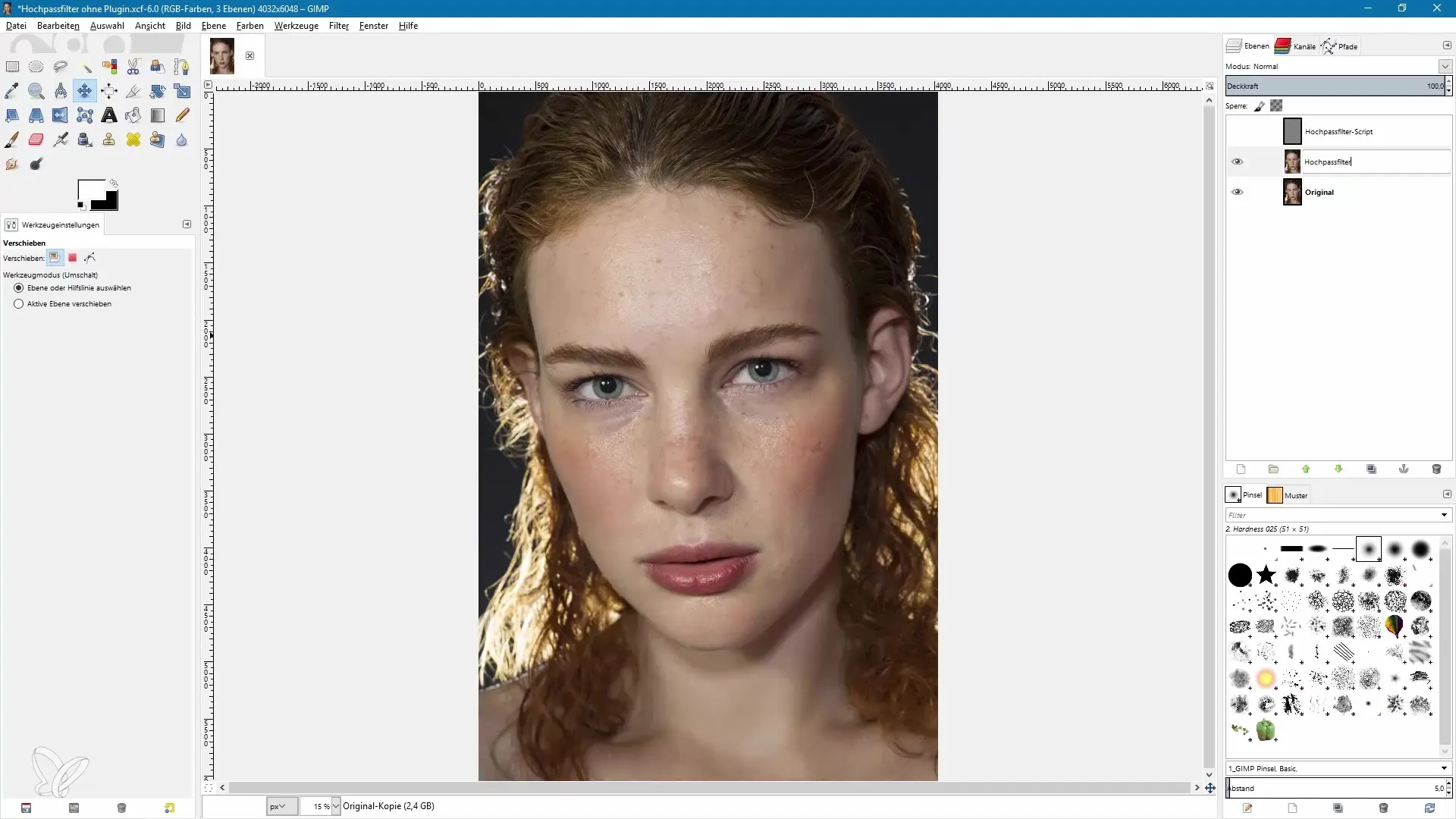
First, you need to invert the colors of the image. To do this, select the "Colors" menu for the active layer and then the "Invert" option. Your image should now appear in inverted colors.
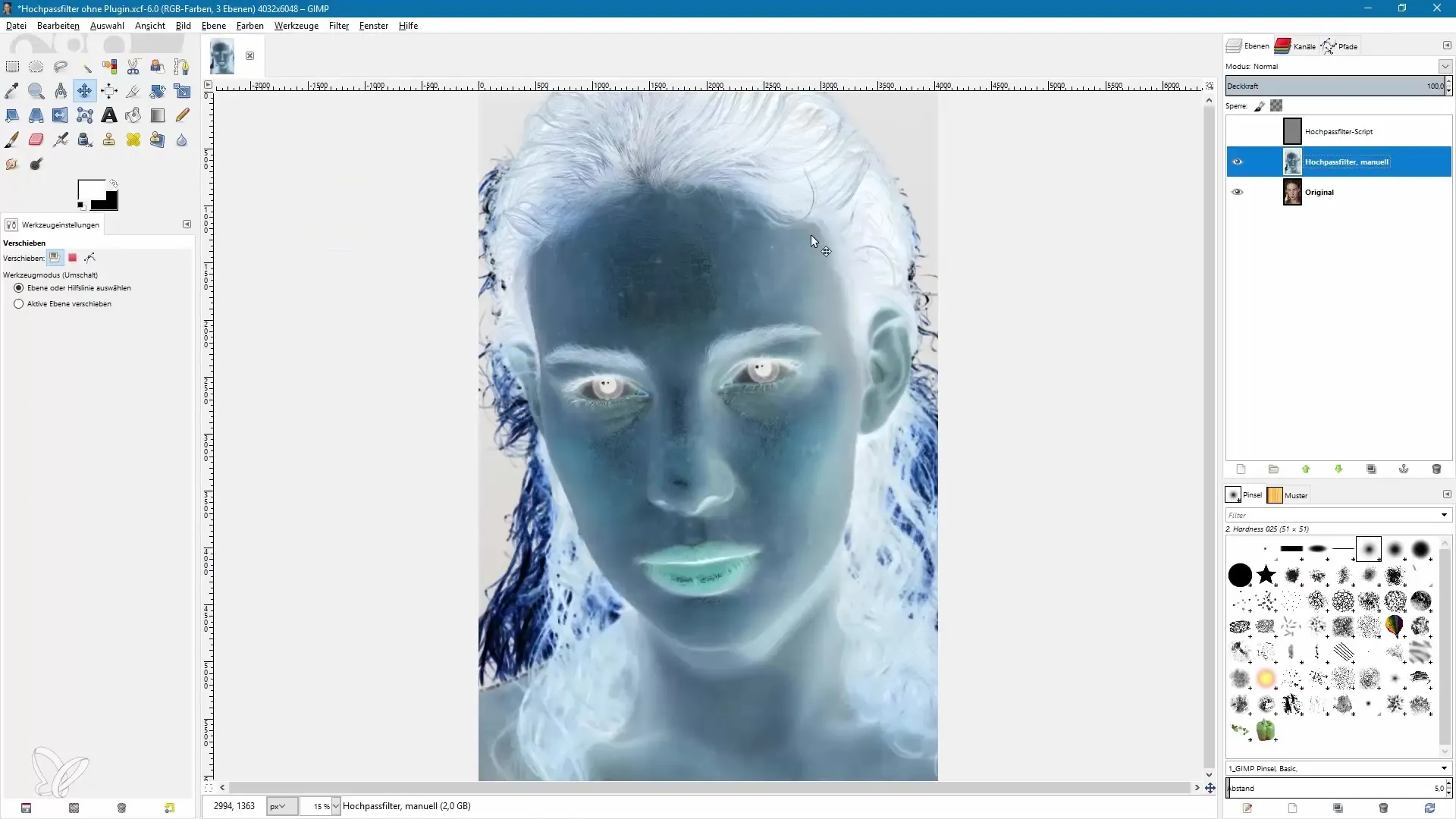
In the next step, you will change the layer mode. Go to "Layer Modes" and select "Overlay". Your layer will now appear gray. To create the desired high-pass filter effect, you need to apply a filter. For this, select "Filters", followed by "Blur" and then "Gaussian Blur".
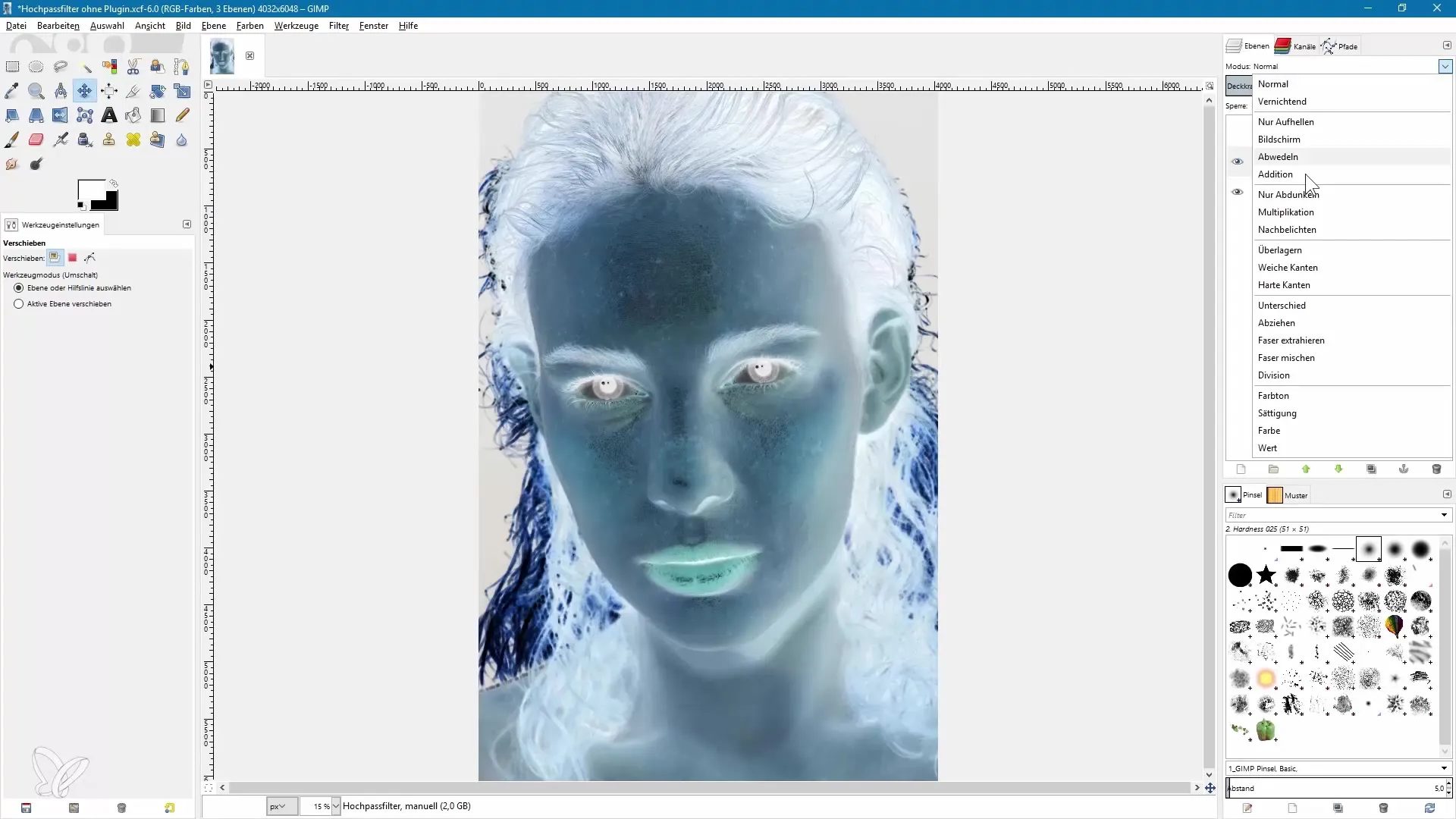
In the dialog for the blur, enter the same radius as before: 35. Make sure that the chain icon is activated so that the other value is automatically adjusted. Confirm with "OK" and let GIMP process the result.
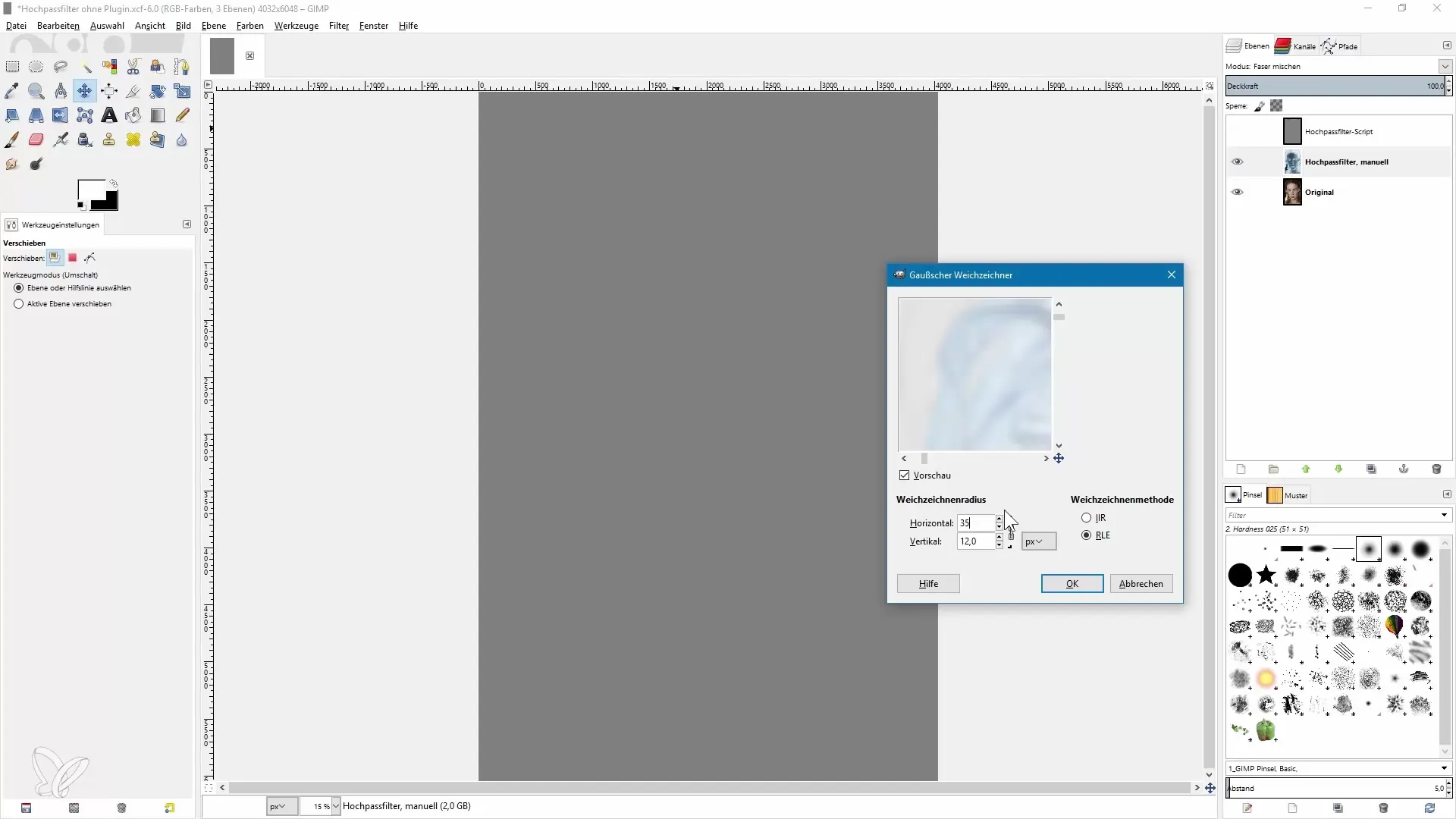
After the calculation, you will find that the manual result corresponds to that from the script. However, the problem is that you only see this result in combination with the original layer. If you hide the original layer, you will only see the inverted and blurred image.
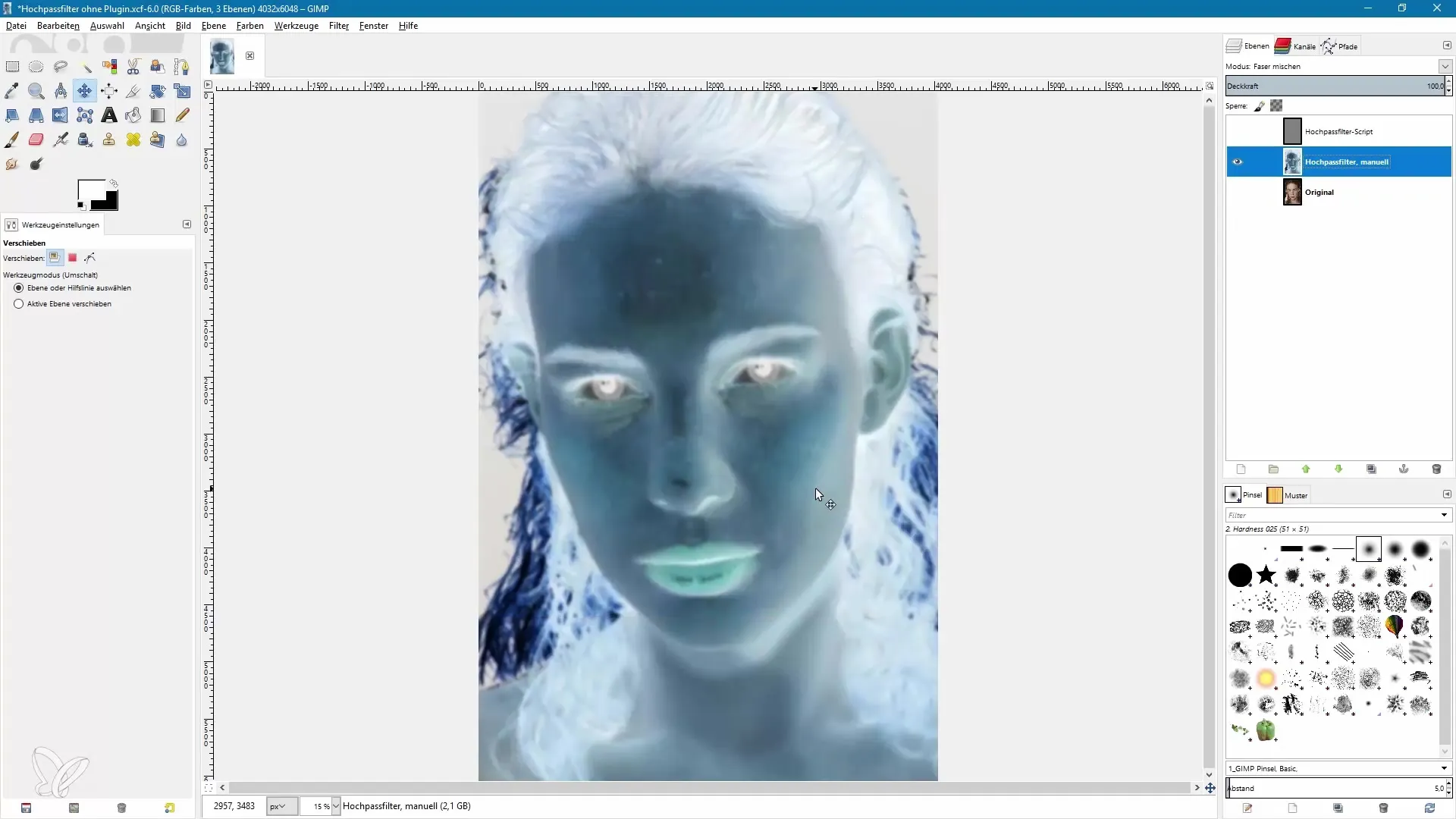
To see the result on a new layer, you need to merge the visible layers. Make sure the manual high-pass filter layer is active and go to "Layer" and then "New from Visible". This will create a new layer containing the current result.
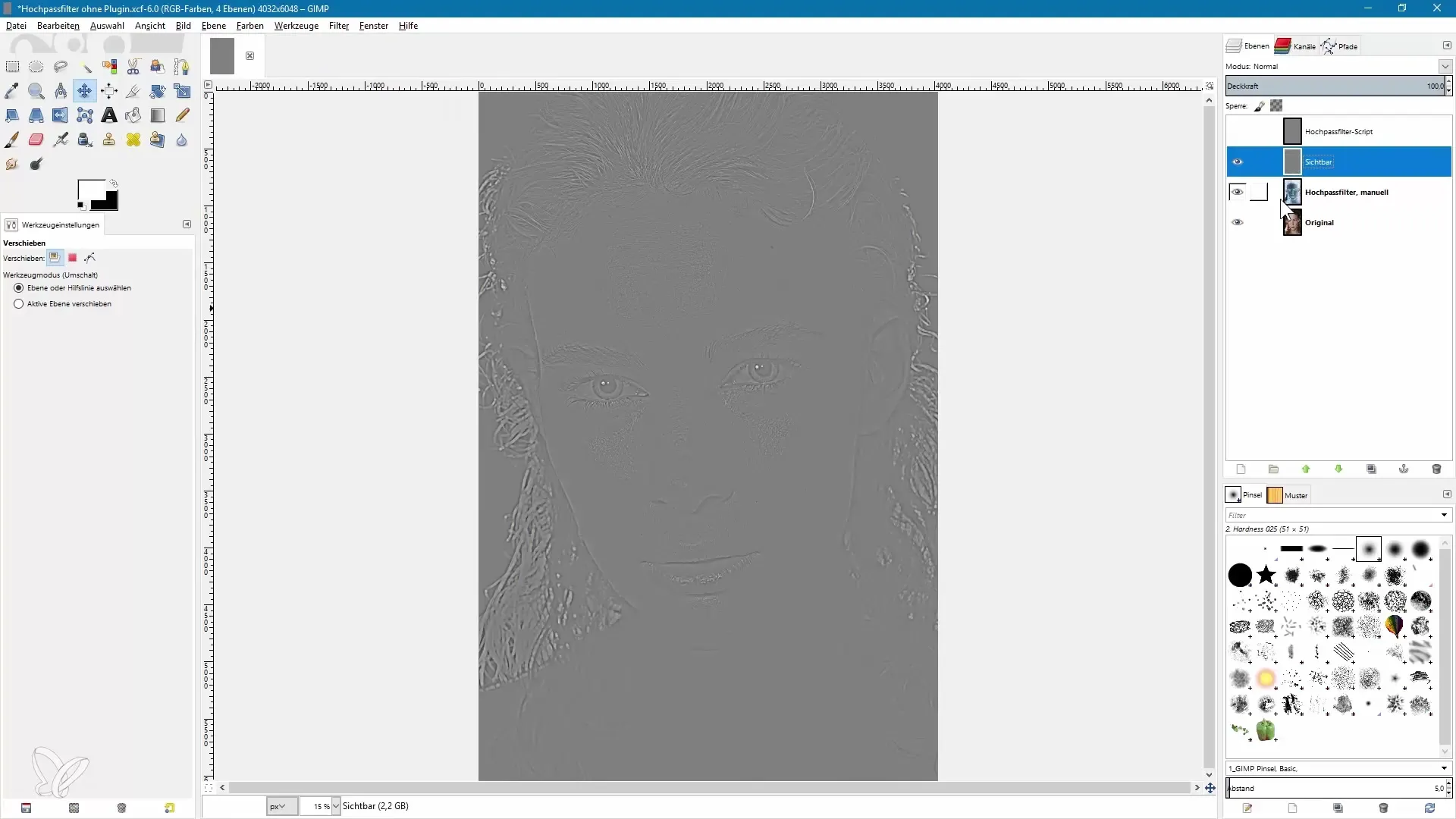
Now you can manually hide the high-pass filter layer and still see the desired result. For comparison, you can also show the upper script layer to see that both results are identical.
In conclusion, you have now learned how to achieve the effect of a high-pass filter in GIMP without external plugins or scripts. You have recognized the efficiency of this method, even though several steps are necessary. In my future videos, I will use the easily installable high-pass filter script to provide you with the convenience you desire.
Summary – Applying a High-Pass Filter in GIMP – Effective Application without Plug-in
Applying a high-pass filter in GIMP without additional tools is not only possible but can also help you reduce your software costs. You have learned the steps to create the effect and can now elevate your image editing to a new level.
Frequently Asked Questions
How does a high-pass filter work?A high-pass filter allows only high frequencies through in the image, emphasizing details and sharpness.
Do I need a plug-in to use a high-pass filter in GIMP?No, you can apply a high-pass filter even without a plug-in by following manual steps.
What is the advantage of manually applying a high-pass filter?You have full control over the process and can adjust the settings individually.
Can I save the result?Yes, you can save the final image in the desired format after applying the high-pass filter.
Why might I use a high-pass filter script?A script simplifies the process and saves time, as it achieves the same effect in fewer steps.


